Multi-day hike on the E4 in southwest Crete: To follow the E4 walking path, it is often useful to stay overnight in the area. The E4 on Crete runs over a large part of the island and the distances are large. That is why this week we are going to spend a few days in Sougia on the southwest coast of Crete. In this area is a part of the European E4 walking path. This coastal area of Crete is rugged and does not have an extensive road network. Most parts of the E4 are not accessible by car. Therefore it is so special to walk here in the tranquillity of unspoiled nature.
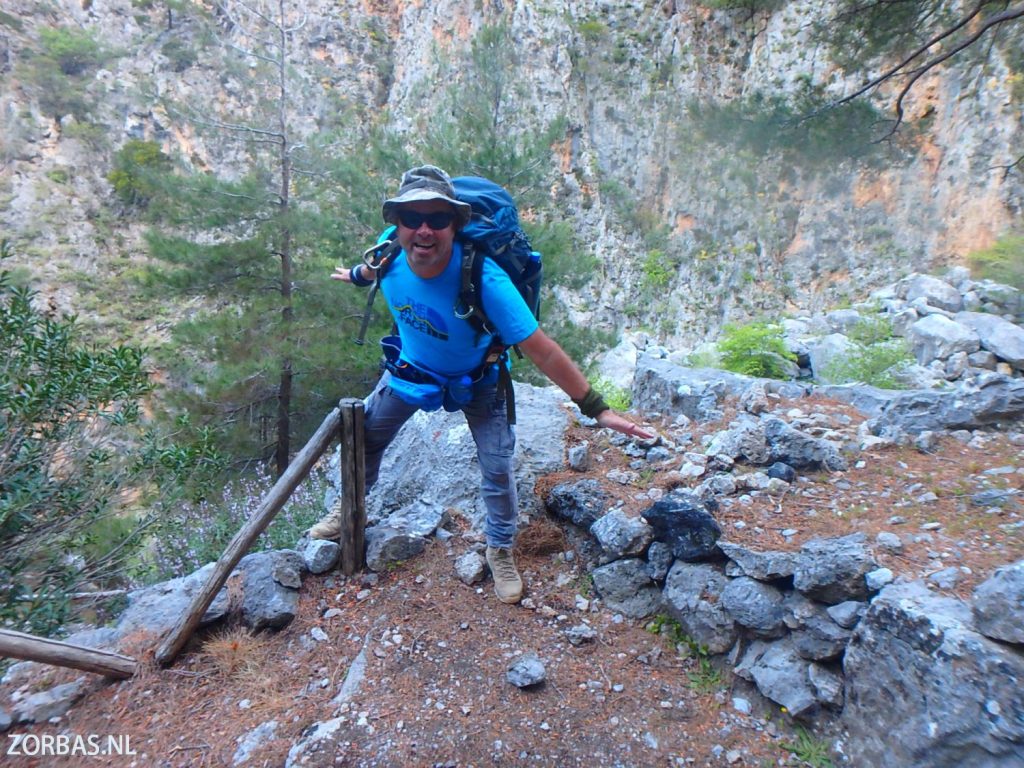
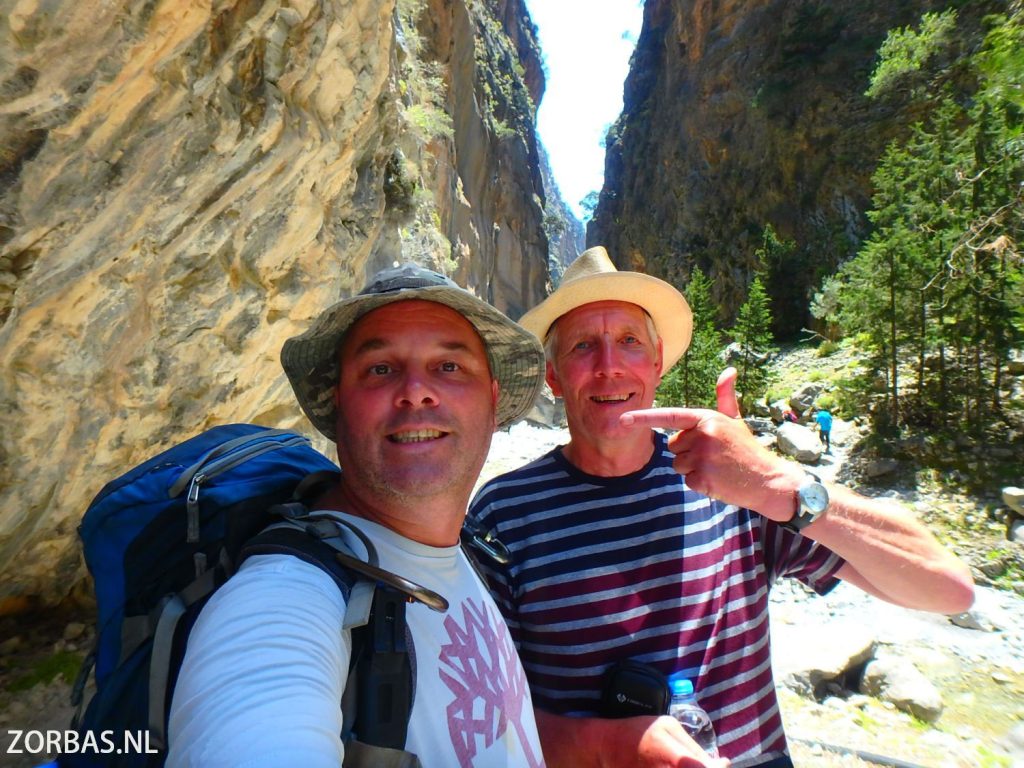
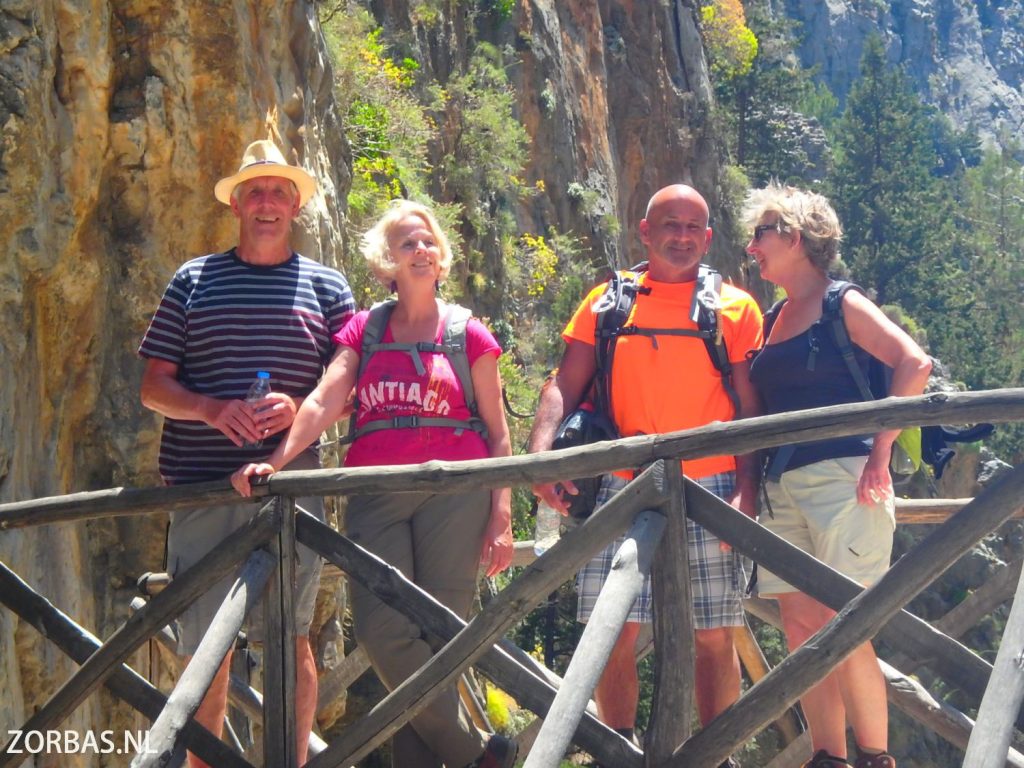
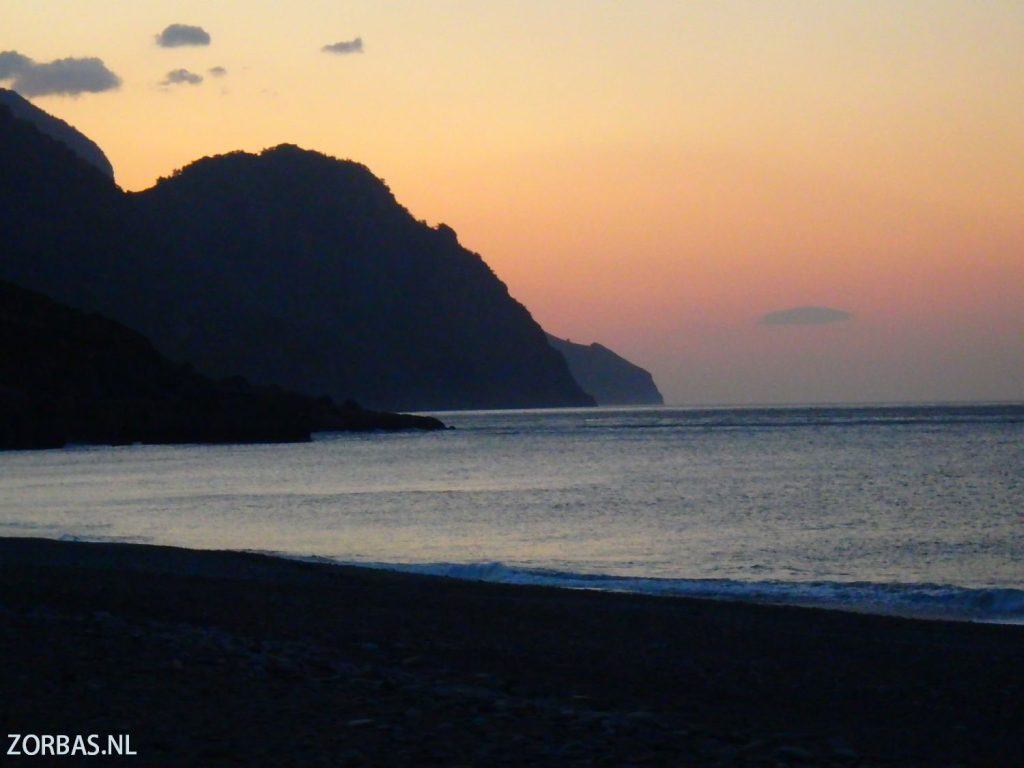
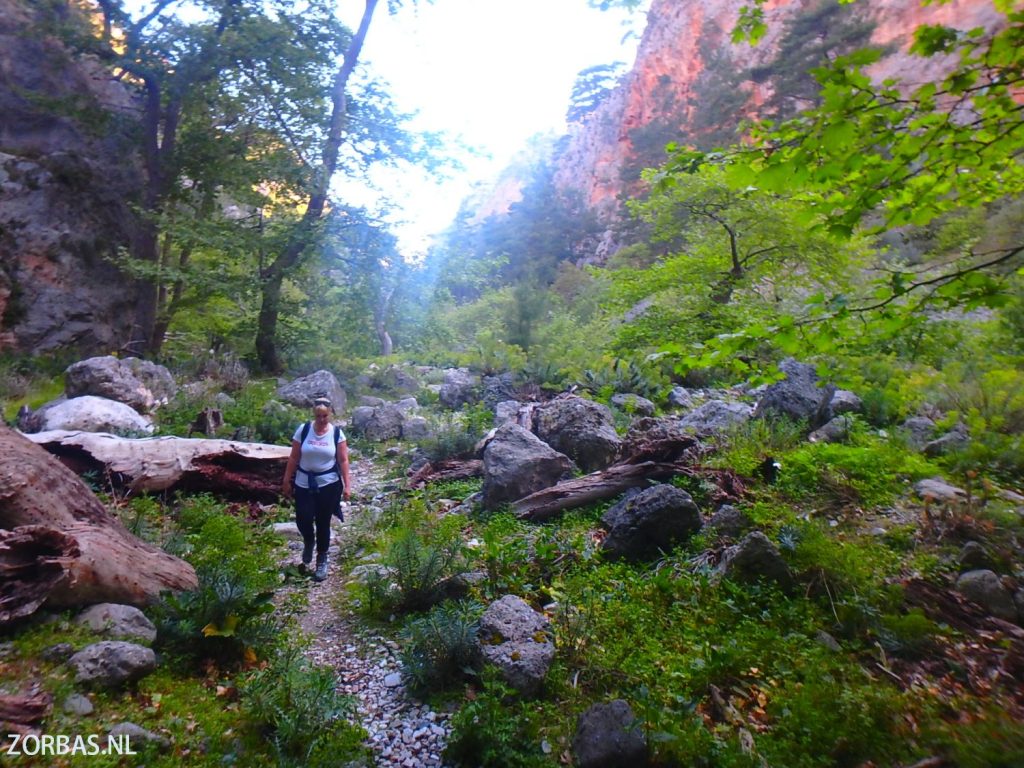
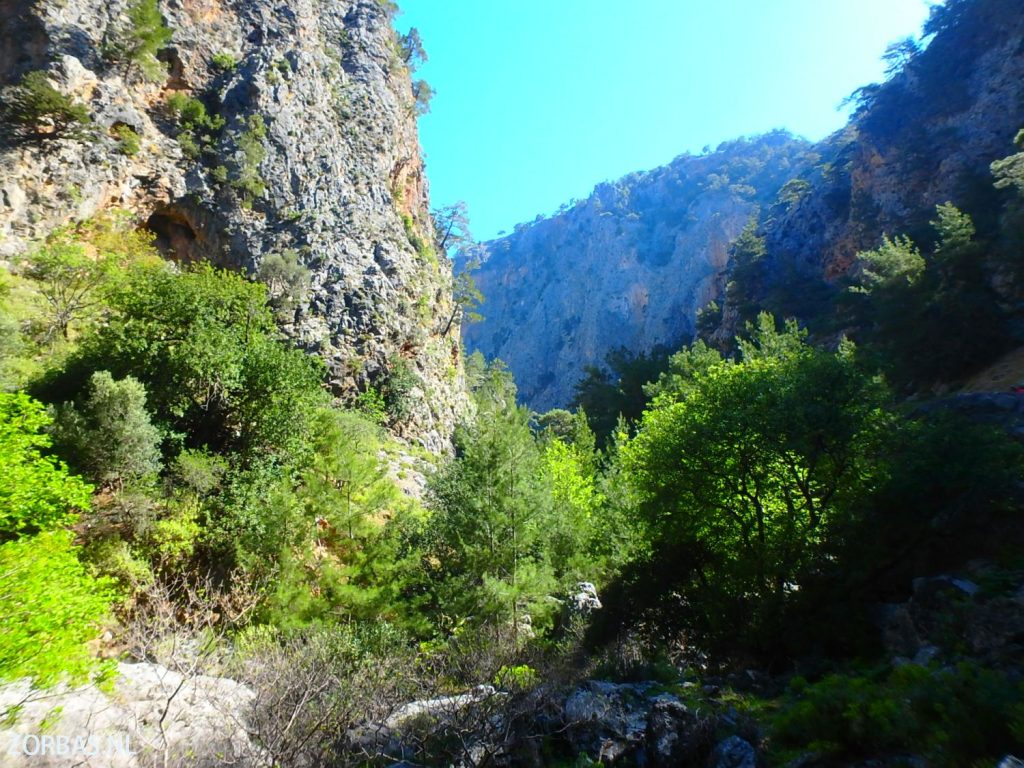
The weather in Kokkini Hani (Zorbas Island) until January 12, 2026: This week, warm January weather in Crete, between 18-22 degrees Celsius. Cloudy, with occasional light clouds, and a gentle southerly wind.
Zorbas Island 2026: Flight & Apartment Deals Now Available! Ready for an active holiday on Crete? In 2026, we are offering complete package deals including flights and accommodation in Kokkini Hani. Whether you prefer the island in full bloom, the vibrant summer energy, or the warm late season, we’ll take care of everything from A to Z.
Visit Ancient Lissos
First hiking day, from Paleochora via Lissos to Sougia: The first day of the hiking week in Crete starts early, because we first have to drive to Paleochora on the southwest coast of Crete. From the village of Paleochora we walk along the south coast of Crete to the village of Sougia. From the little harbour of Sougia we walk to the Lissos gorge. It is a beautiful gorge with amazing rock walls in various colours. In fact this gorge is the connection between Sougia and ancient Lissos. After the gorge we walk to the excavations of Lissos. The path is older than 2,000 years, with the traces of the past still visible.
Lissos was an important city on Crete between the 4th century BC until the 7th and 9th centuries AD. In ancient times, Lissos was known for its famous Temple of Asklepios (Aesculapium), where people from all over Crete came to be healed by the local waters. The residents abandoned the cityafter a massive earthquake. The earthquake destroyed the temple, but the mosaic floor with images of animals and geometric patterns is still there. There are still some stone houses dating from Roman times where you can just walk around. Through the Lissos gorge we walk back to Sougia, where we spend the night.
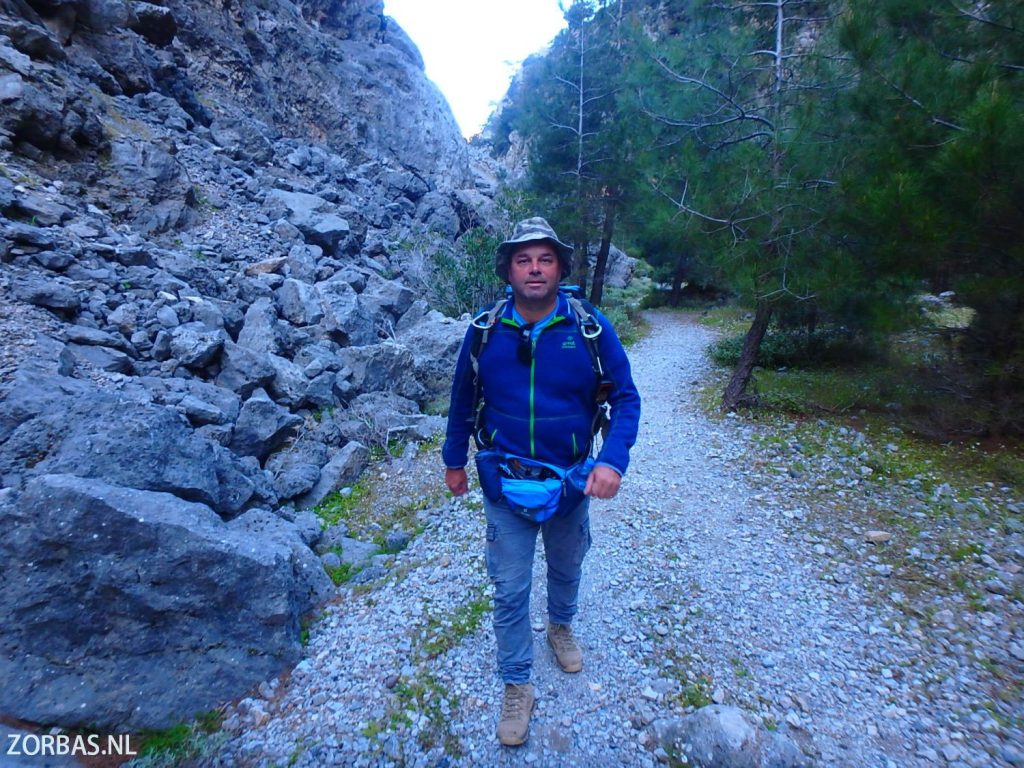
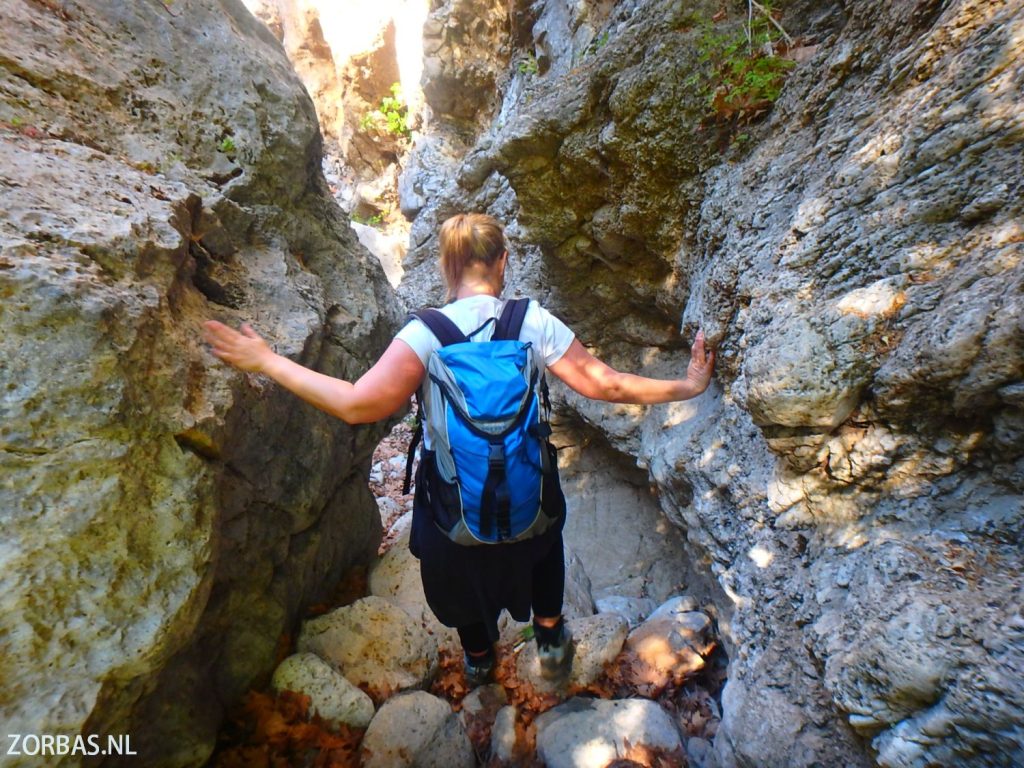
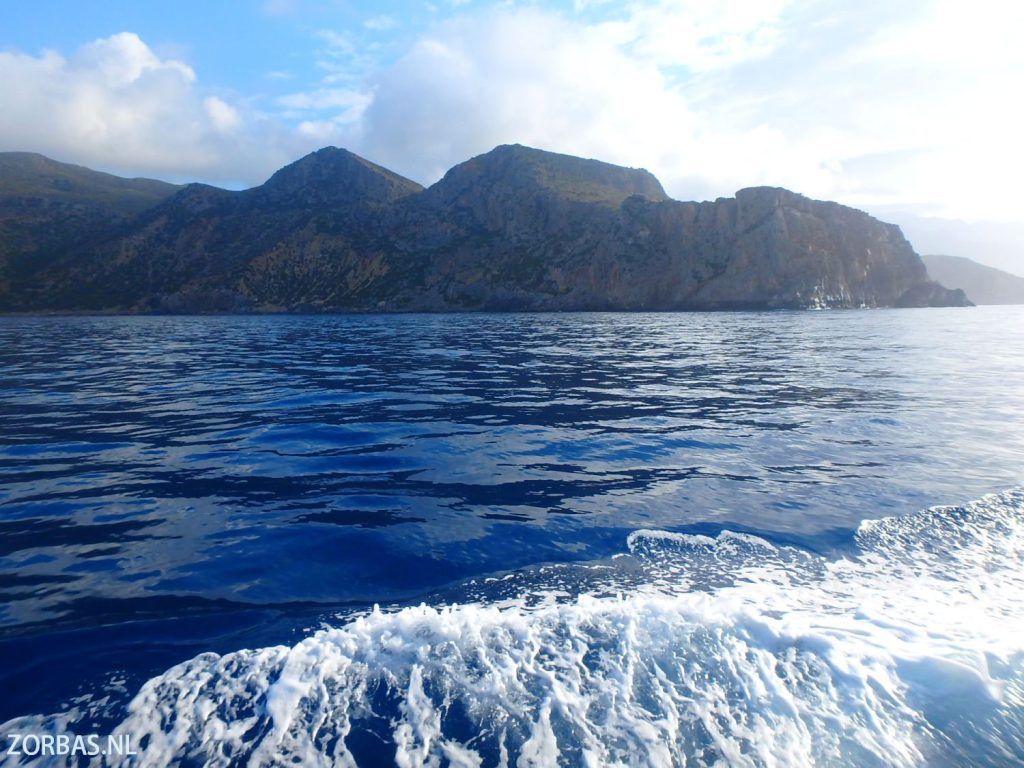
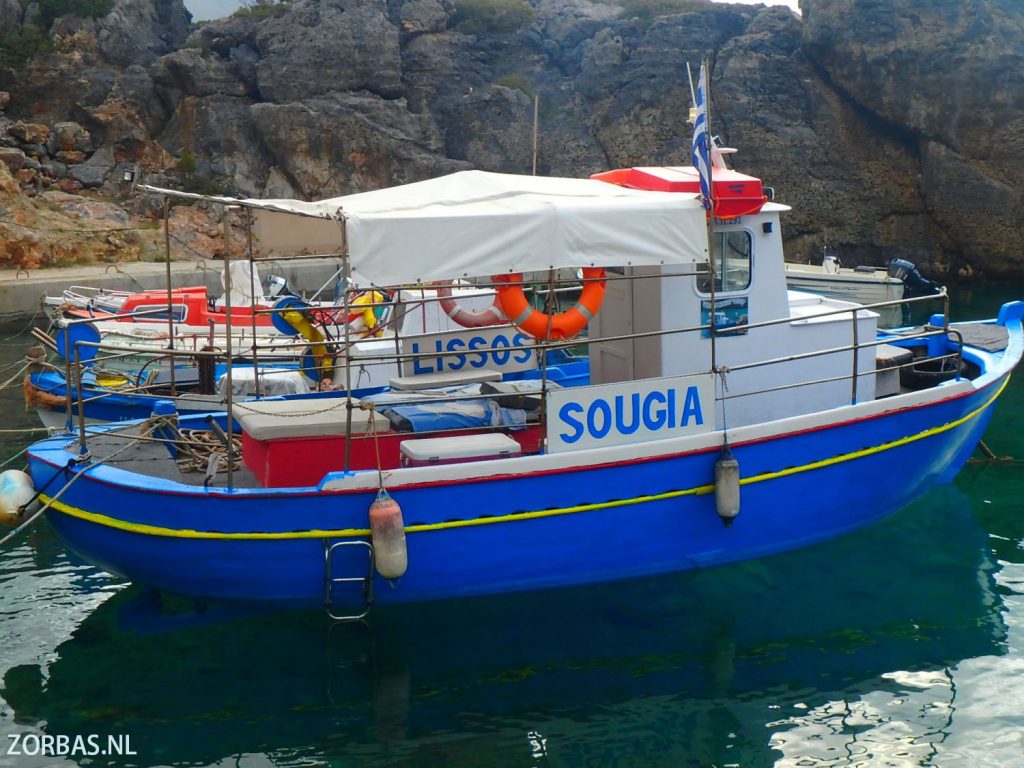
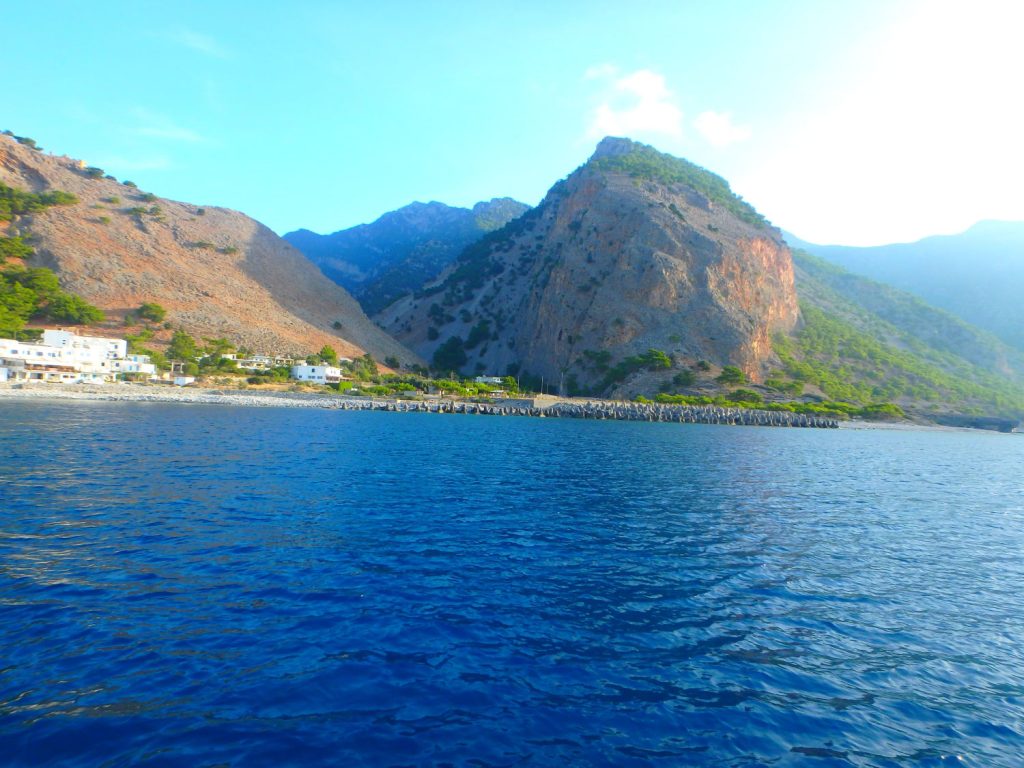
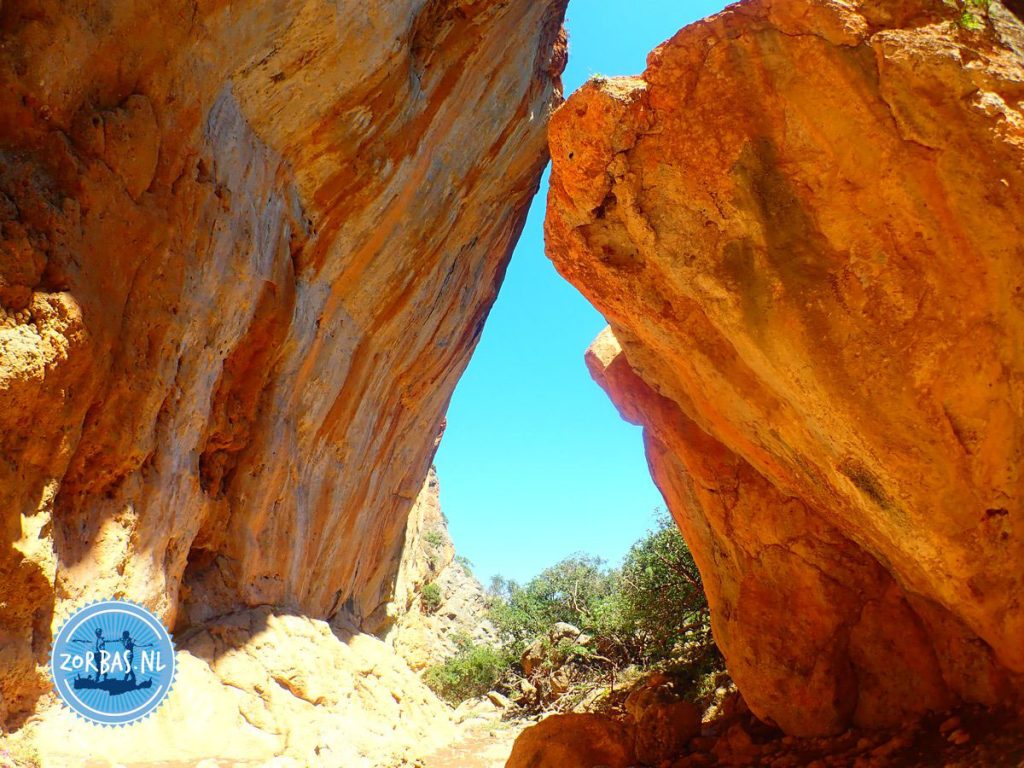
Sougia – Little village in the South of Crete
Sougia Crete: In ancient times Sougia was the city of pigs, as its old name, Syia, of sys (pig) indicates. In the mountains around Sougia are many oak trees and in ancient times there would have been even more. Because pigs like to eat acorns, there is a suspicion that many pigs were kept here. The old Sougia flourished in Roman and Byzantine times. It was a harbour of the Doric city of Elyros, which in ancient times was prosperous enough to mint its own coins but was destroyed by the Saracens in the 9th century AD. Sougia is located on a connecting route between the E4 walking routes in Southwest Crete. The small village has a large beach on the Libyan Sea where it is wonderful to recover from the walk.
Second hiking day, from Charei Crete to Sougia: The locals know this area, but hardly ever go there. This is because it can only be reached by boat or on foot. The Cretans from the area call it Charei, but it is also known under the name Agios Antonios to the church that is here. Once a year there is a celebration at this church and that is the only day that it is busy with campers who honour the church. We take the boat taxi from Sougia to this secluded beach of Agios Antonios and walk back to Sougia along the coast of the Libyan Sea. A few kilometres before Sougia we arrive at the rocky beach of Tripiti at the end of the long and dangerous canyon of Trypiti.
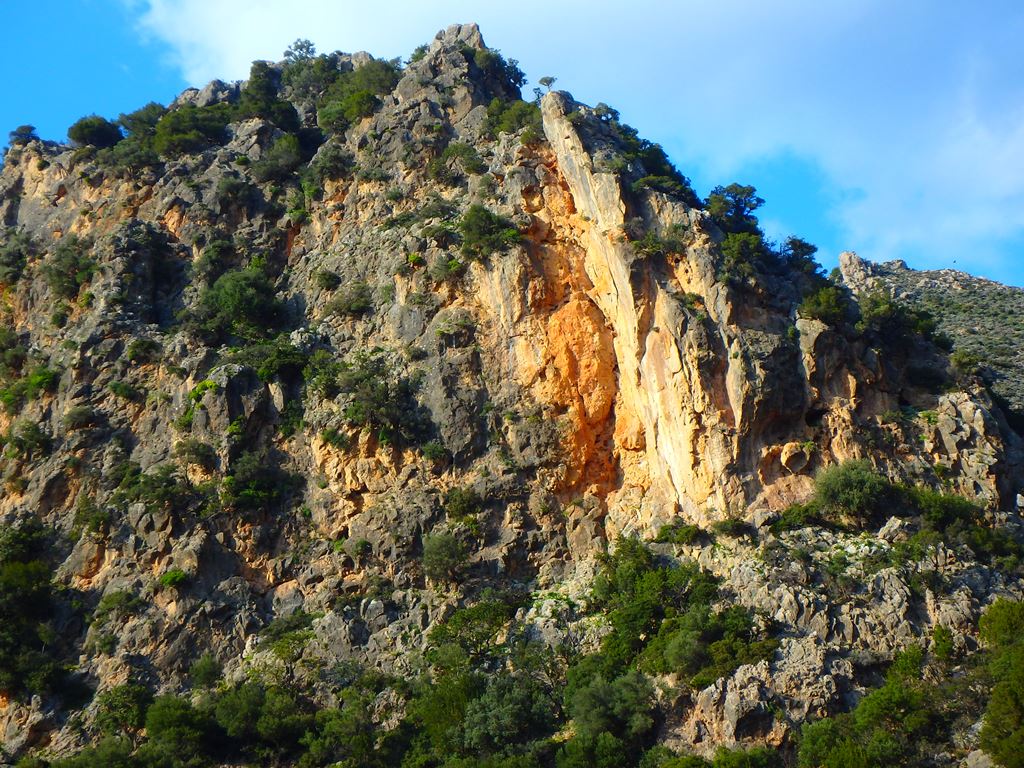
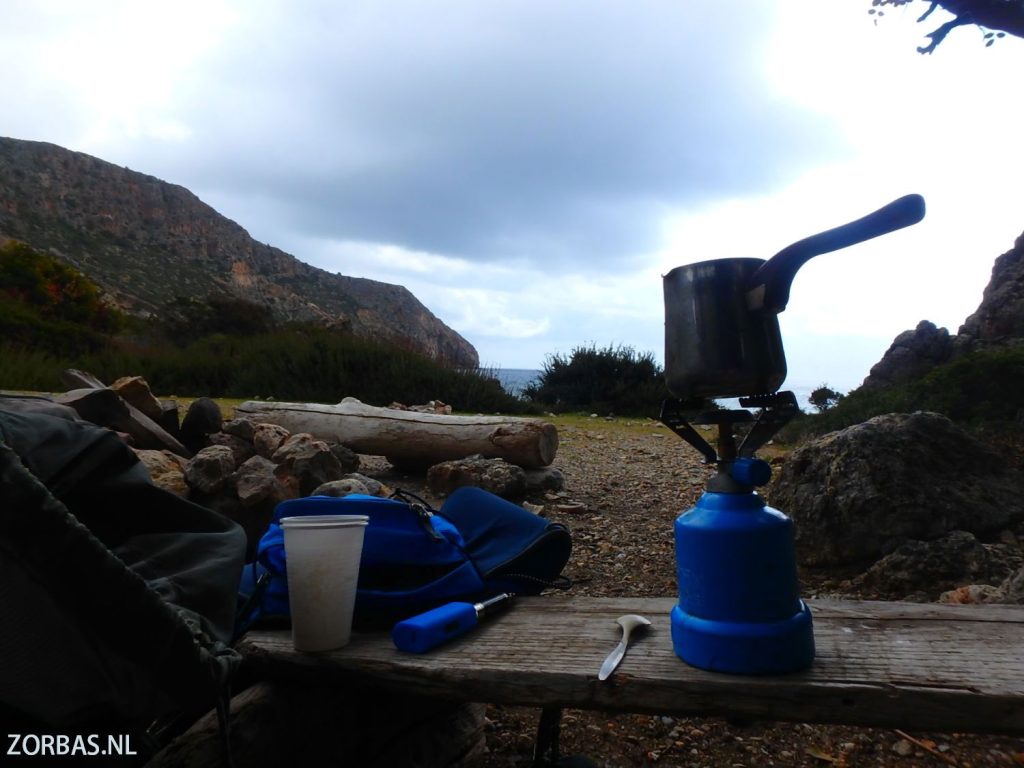
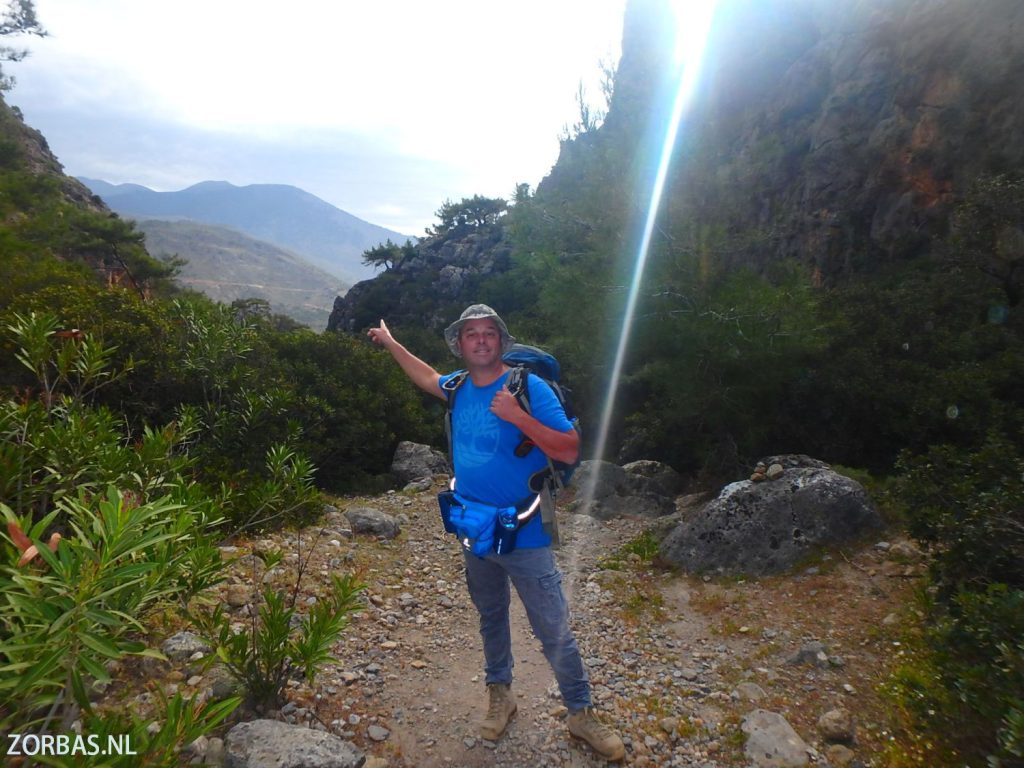
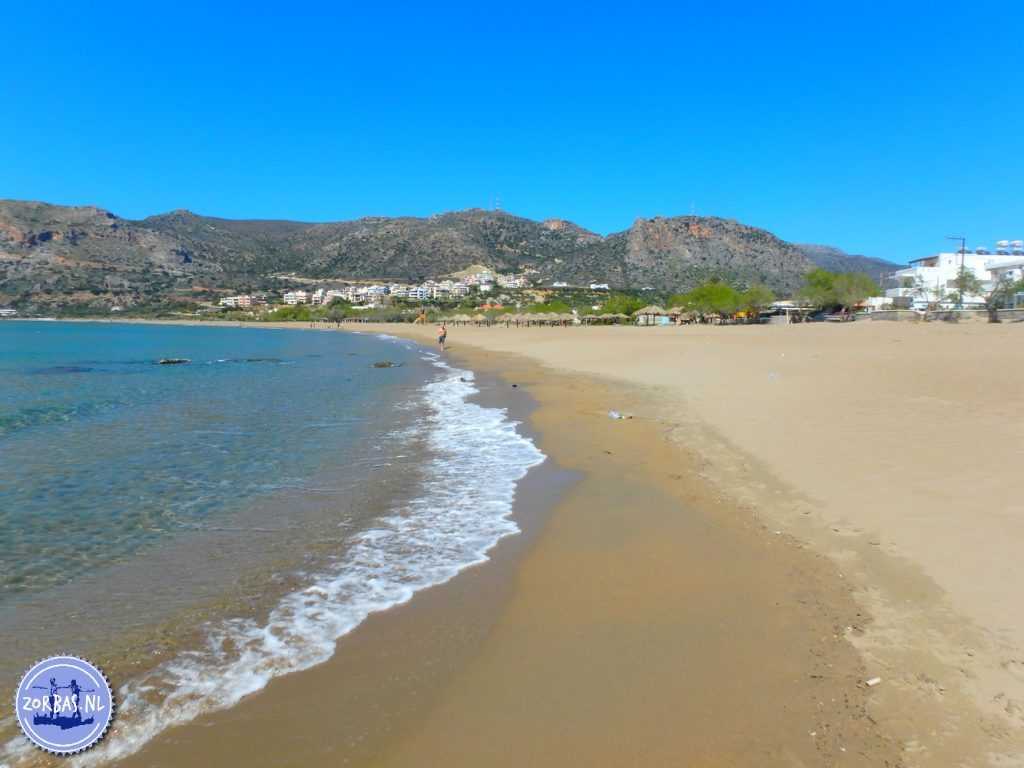
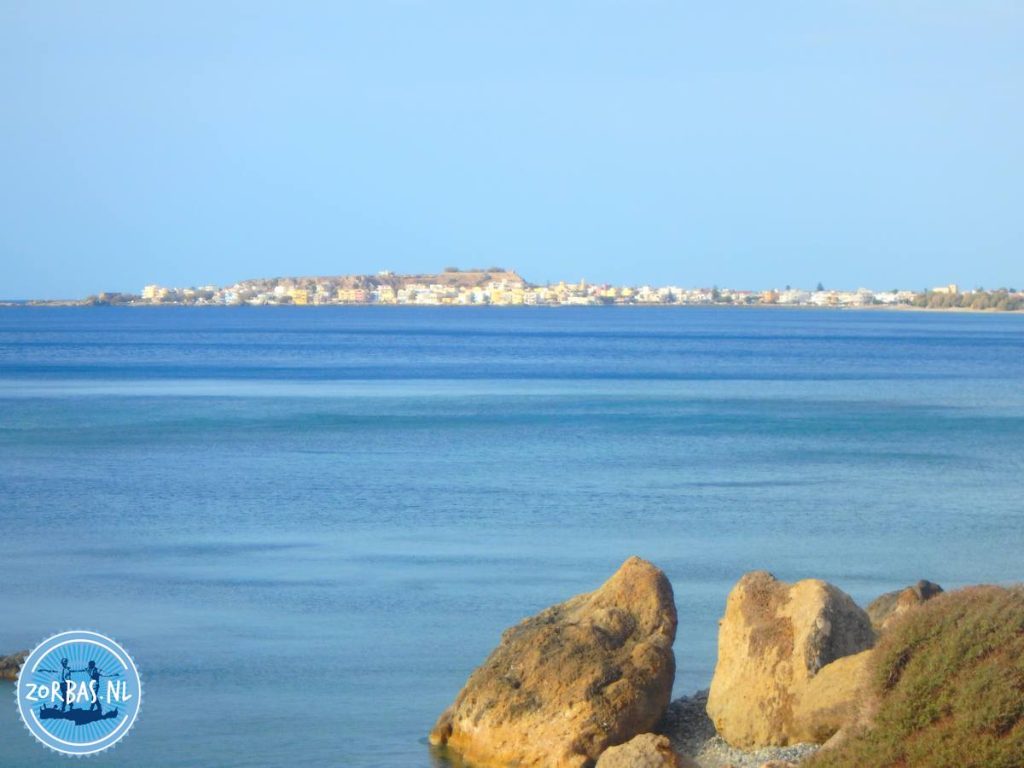
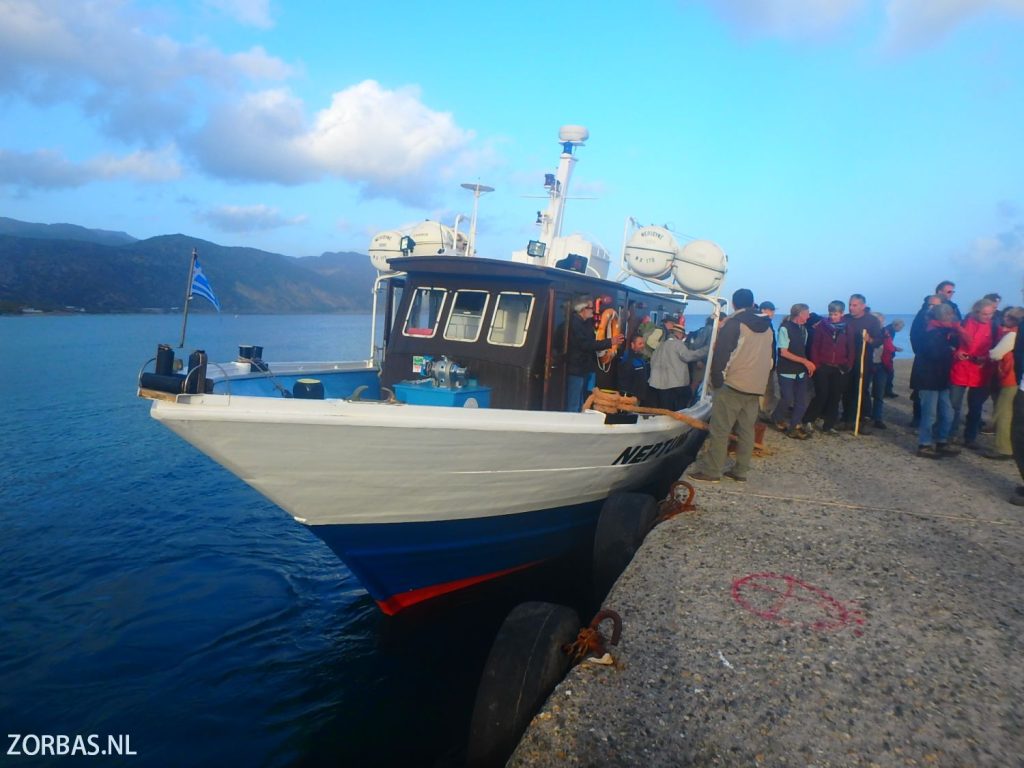
Walking Tripiti
It is assumed that Tripiti was the secluded natural harbour of the ancient city of Pikilasos. Due to geological changes in the fourth century, the harbour has disappeared into the reef. Inscriptions have been discovered in the area, revealing the existence of a temple dedicated to Serapis (Greek-Egyptian god of antiquity). In addition, archaeologists have discovered several graves carved into the rocks. However, today almost nothing reminds of that era. What you see here is a water reservoir, a small sheepfold, and the picturesque chapel of Agios Nikolaos. The last part of this E4 route to Sougia you also come across the ruins of a Turkish tower (koules) and the chapel of Profitis Ilias (prophet Elijah). The walk from Charei to Sougia is about 12 kilometres in unspoiled nature with beautiful views.
Third hiking day, the Agia Irini gorge: From Sougia we leave in the morning to the village of Agia Irini where the eponymous gorge begins. The Agia Irini gorge is located in the western part of the Lefka Ori (White Mountains) and is part of the E4 European walking trail. At the beginning of the gorge there is a view of the surrounding mountains on both sides. Characteristic of this gorge is the rich vegetation with cypresses, plane trees, pine trees and various kinds of herbs.
The gorge is part of the habitat of the Cretan wild mountain goat Kri-Kri, but also for many other animal species. The story about the Agia Irini gorge is not limited to its unique nature. During Ottoman rule, the rebels sought refuge here and used a path leaving from this gorge to flee to Omalos. We continue and walk through the riverbed back to Sougia.
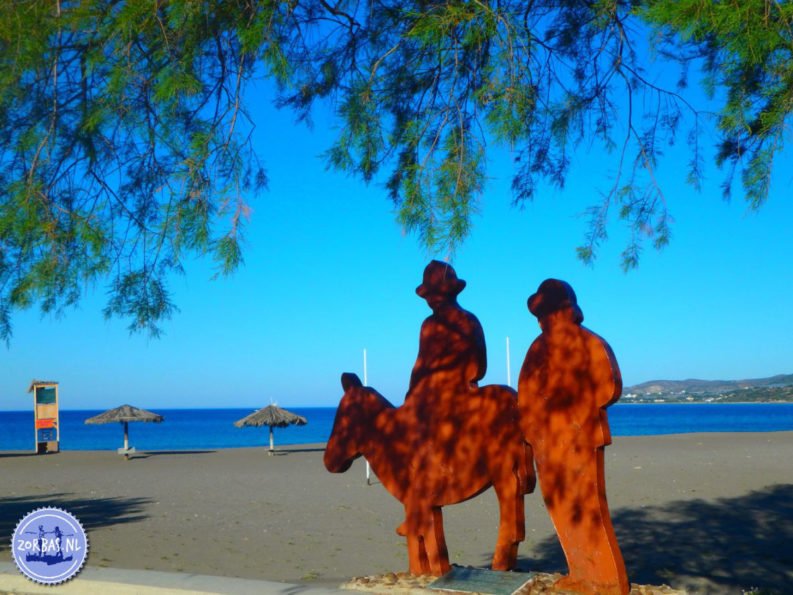
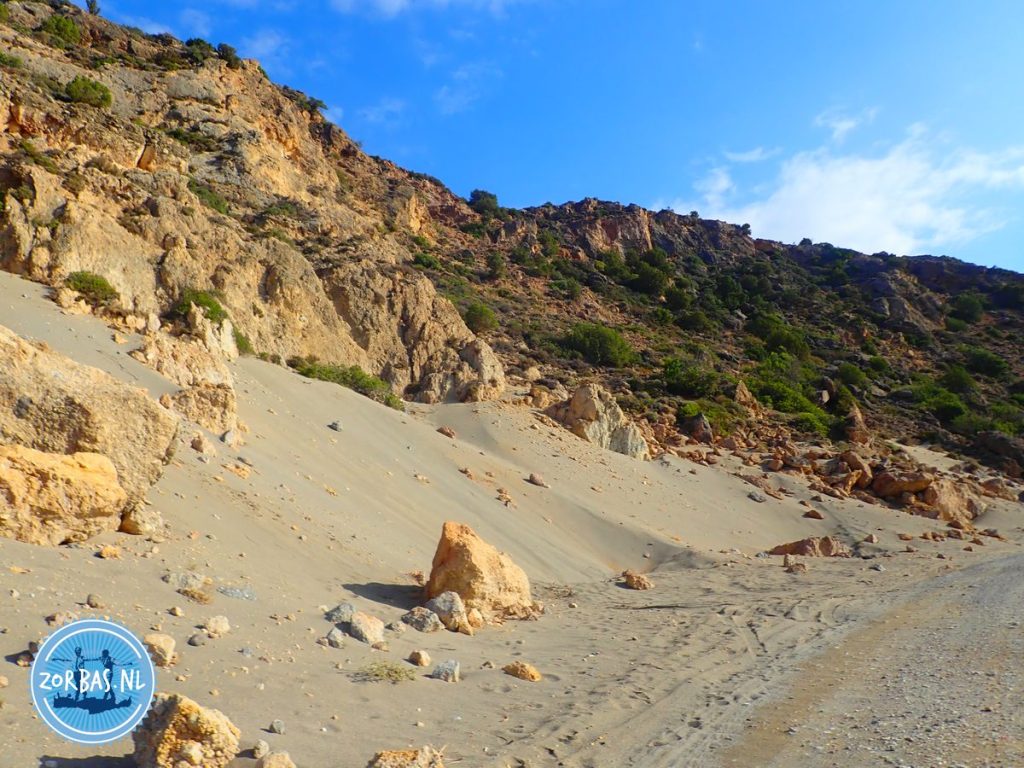
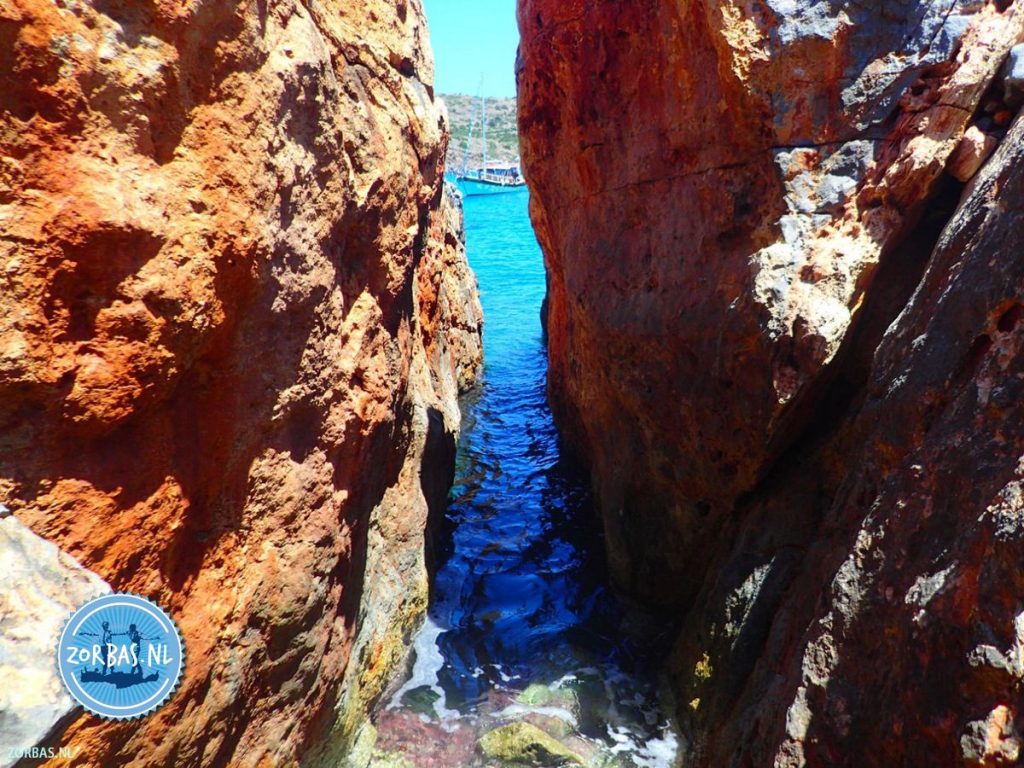
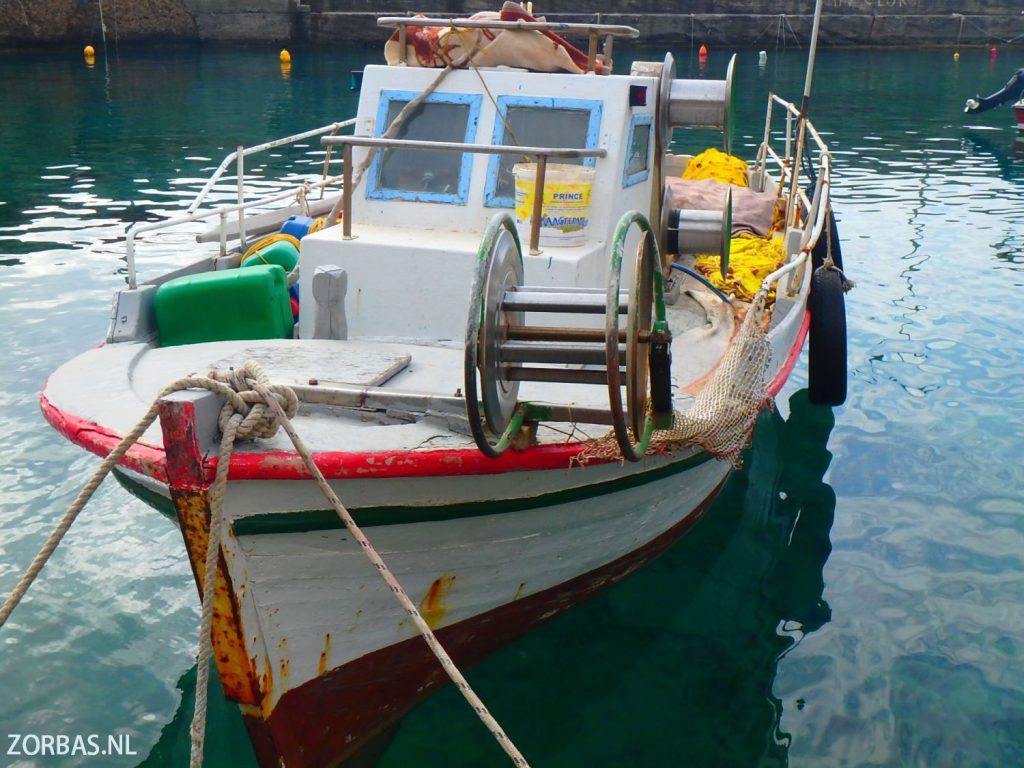
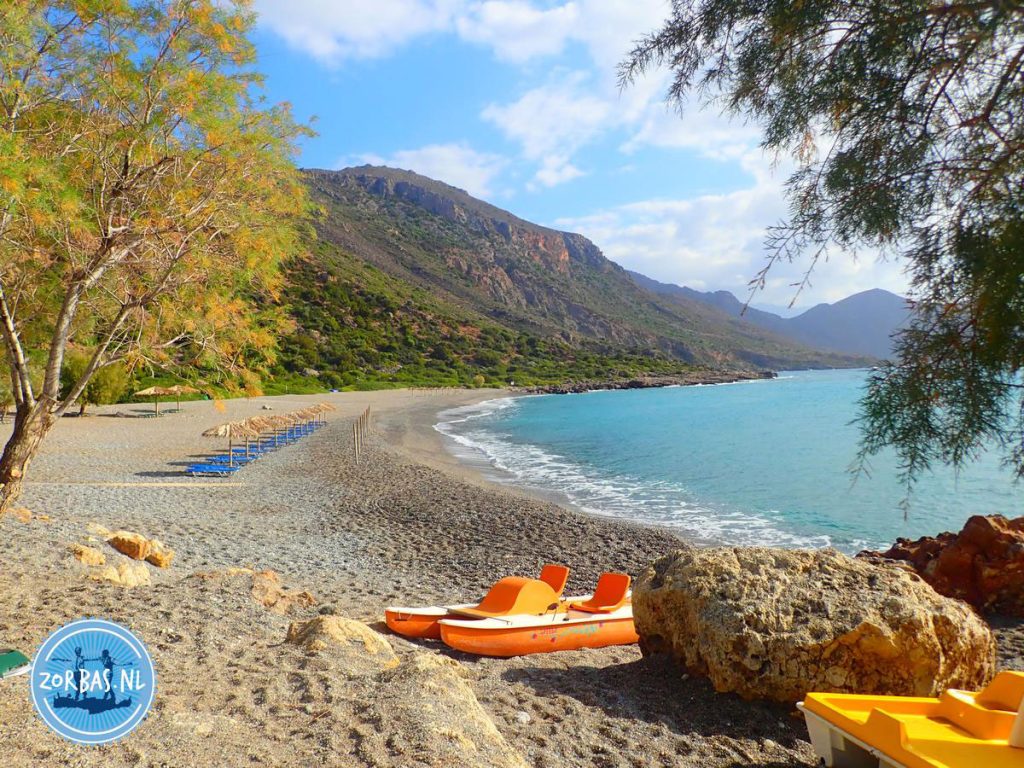
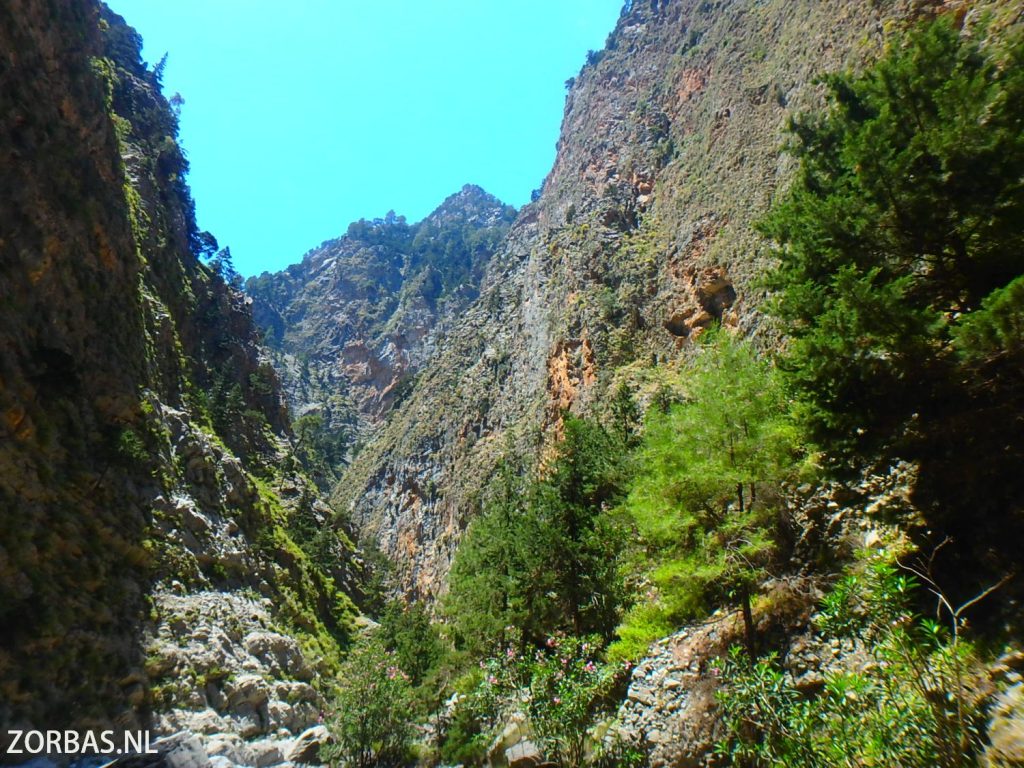
The famous Samaria Gorge
Fourth hiking day, the Samaria gorge: The best known gorge in Greece is the Samaria gorge on Crete. The name comes from the deserted village of Samaria in the gorge, which owes its name to the church of Oia Maria. During the Ottoman rule it was a hiding place for rebels and the local population. Many native species of plants and animals live in the gorge, including the wild mountain goat, the Kri-Kri. In 1962 the area was declared a national park and since 1981 the park is under the supervision of UNESCO. The narrowest point in the gorge is called Iron Gates.
Because this gorge is famous, there can be many visitors. That is why we leave early in the morning to the Omalos Plateau where the entrance is. The advantage is that we begin our walk before the crowd arrives. The first kilometres are hard, because about 750 meters must be dropped over a path on rocks, which runs quite steeply down. The end of this walk is in Agia Roumeli, from where we take the boat to Hora Sfakion. There is no other way is to get out of here. From Hora Sfakion we drive back to our accommodation in Kokkini Hani.
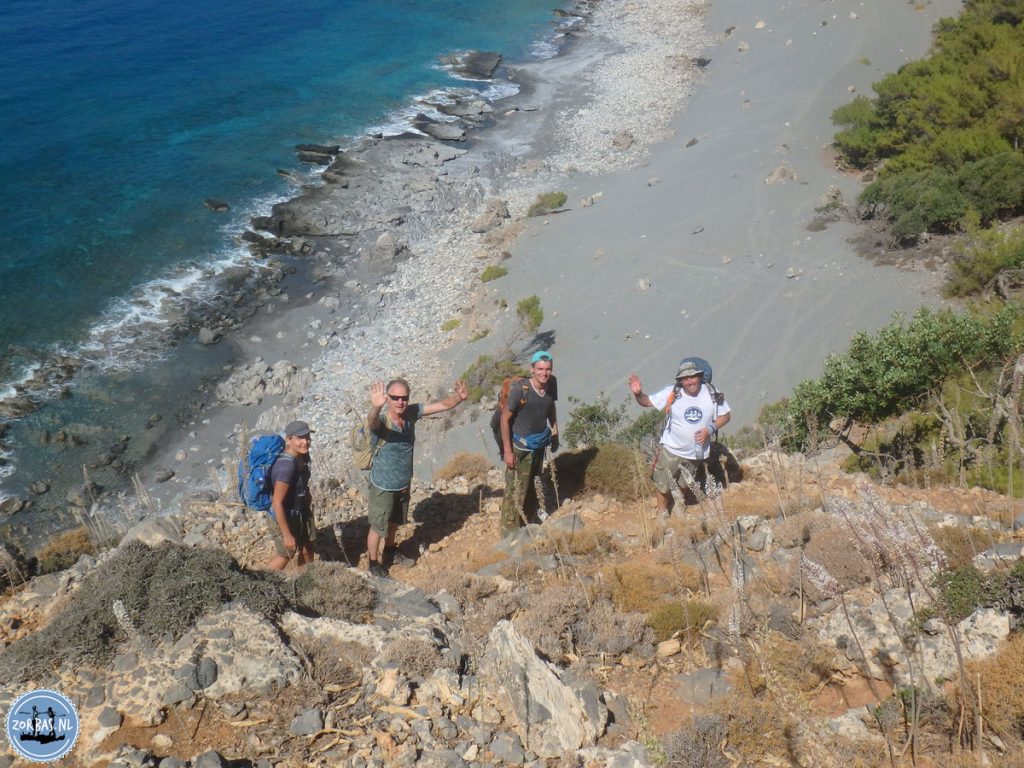
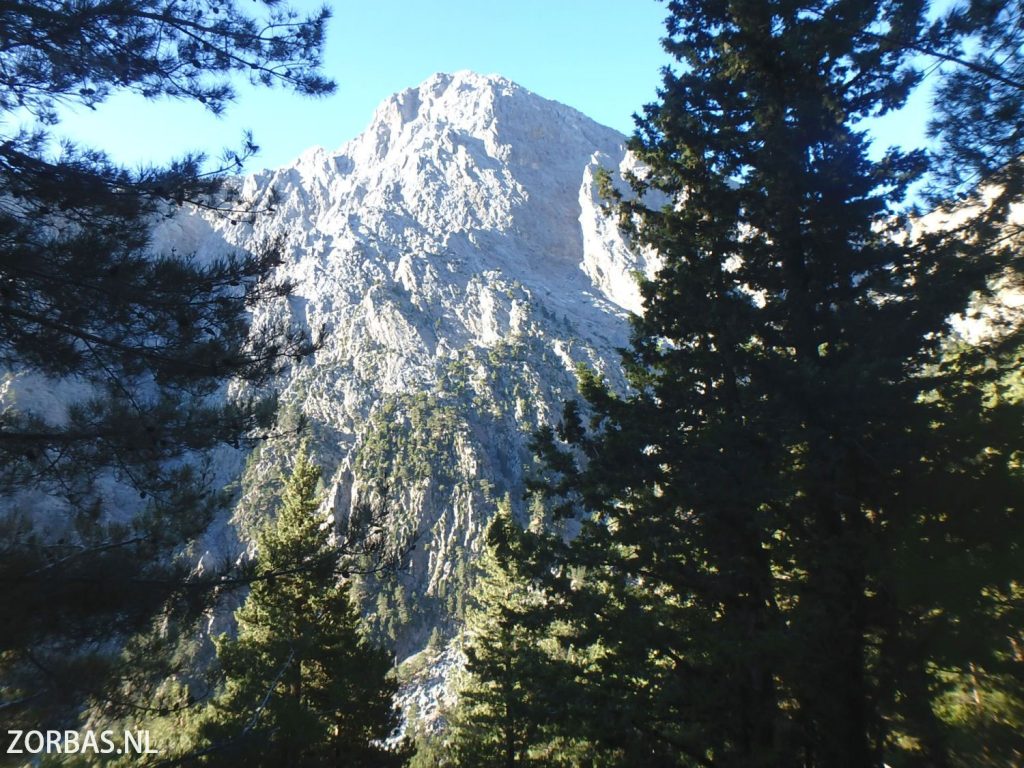
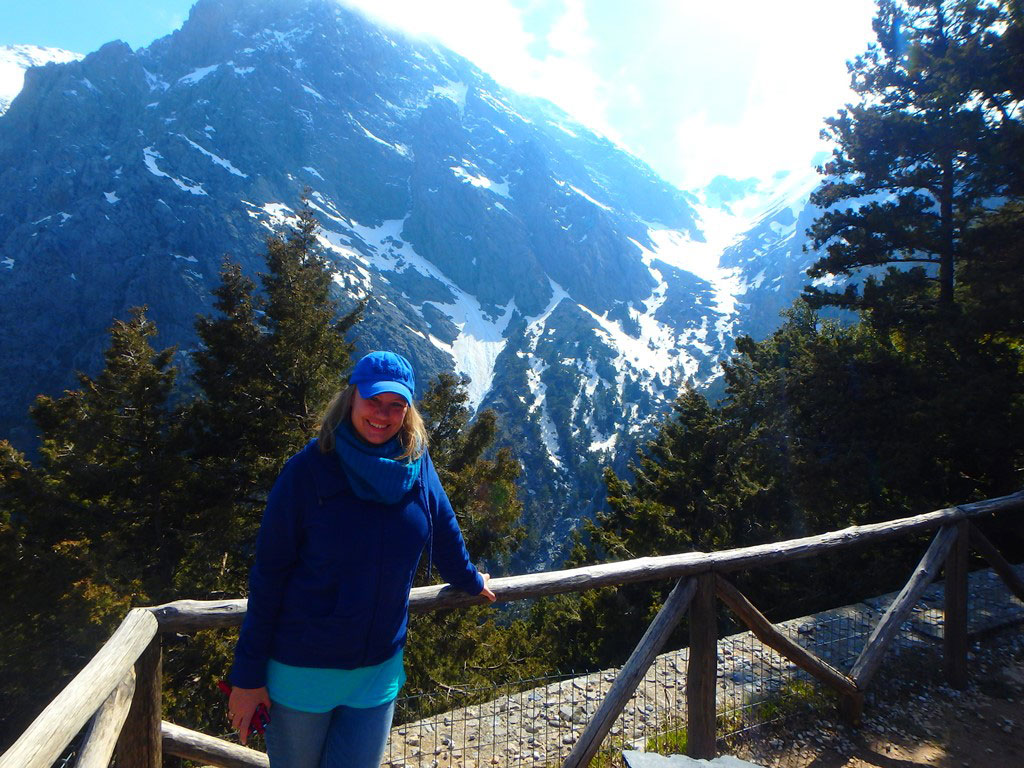
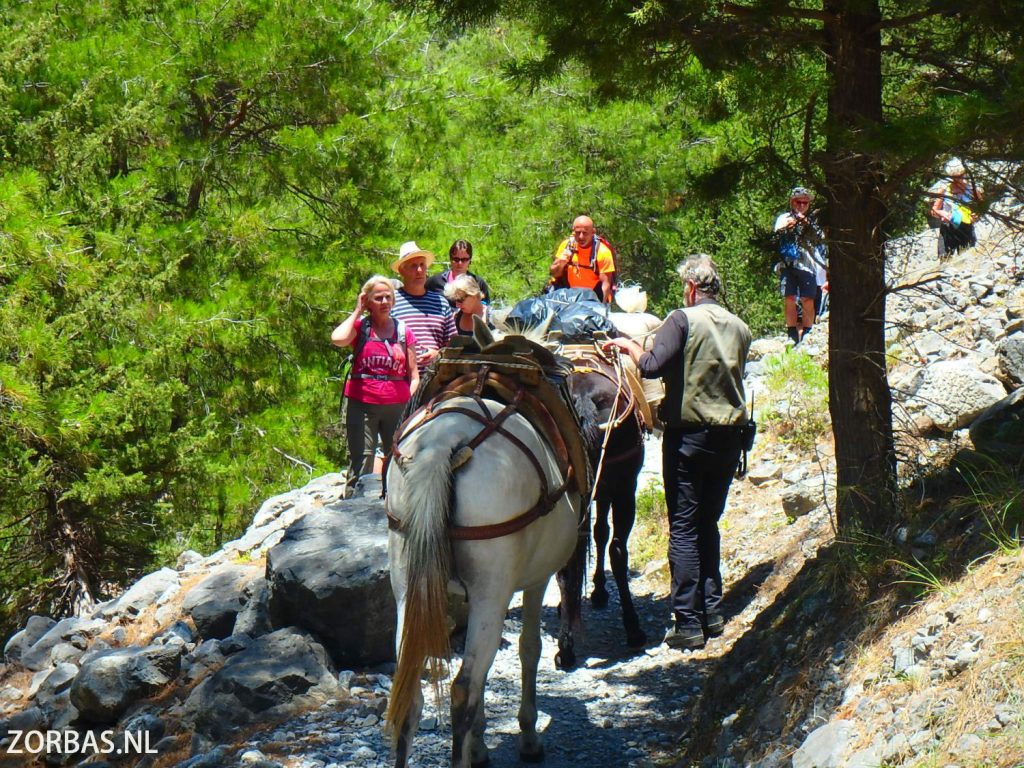
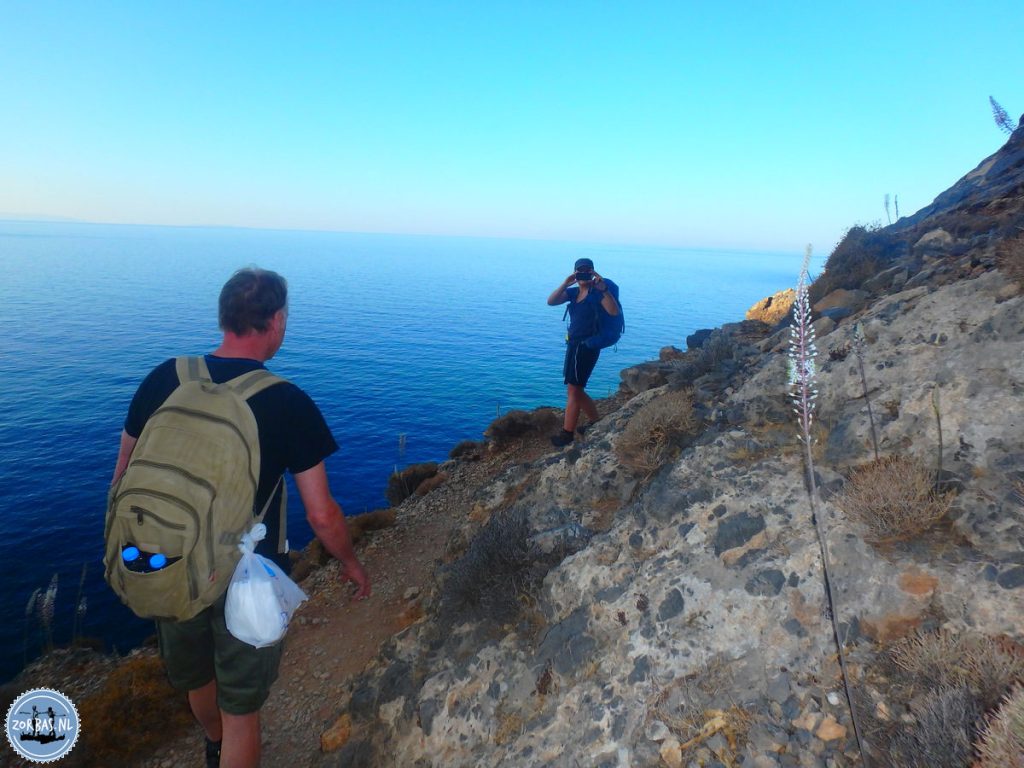
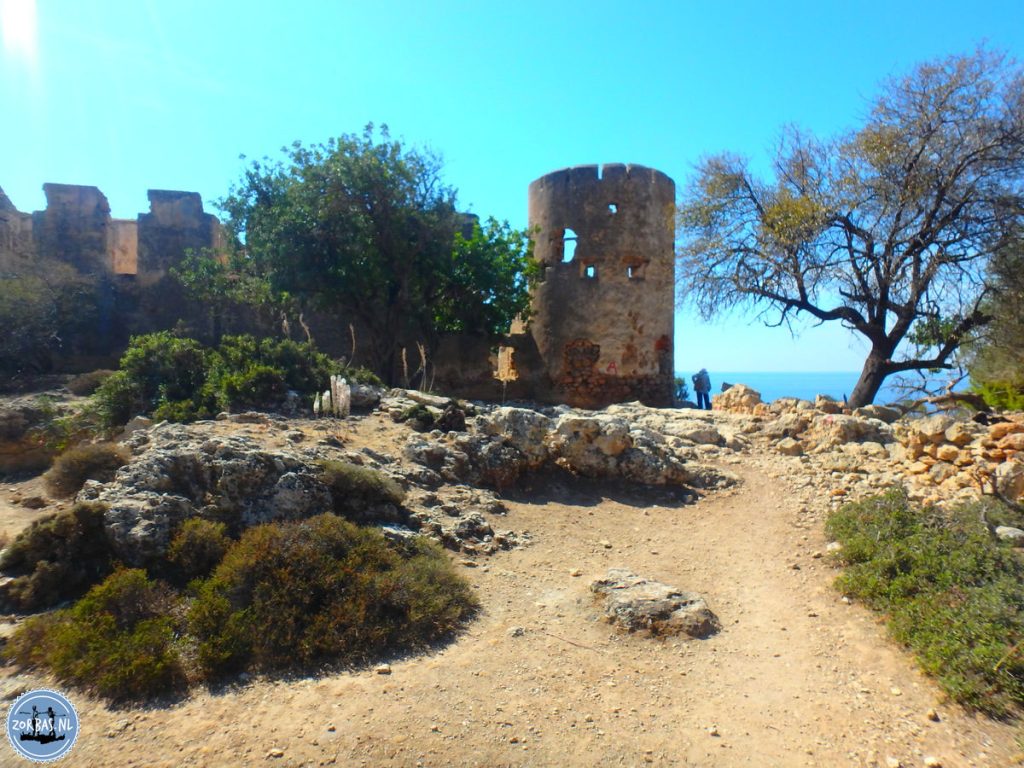
Holiday information
E4 walking on the south coast of Crete: The rugged south coast of Crete is a beautiful walking decor. A few times a year we organize a multi-day walking tour in South Crete. We mainly follow parts of the European E4 walking route. But there are more beautiful routes that we like to walk with our guests. Feel free to contact us if you would like to know when we have planned our multi-day walks or for any other information.
Crete News: On this page, we give updates of all our activities in Crete. We upload our weblogs during summer and winter.
Excursions on Crete: Here you find a lot of information about excursions during your holiday on Crete like: car and bike rental, car and accommodation, diving, cycling, hiking, hiking combinations on Crete, Greek cooking lesson, playing golf, boat trips, horseback riding, outdoor activities, sailing, jeep safari, fishing, group excursions, active holiday on Crete, weekly excursion programs or fly-drive.
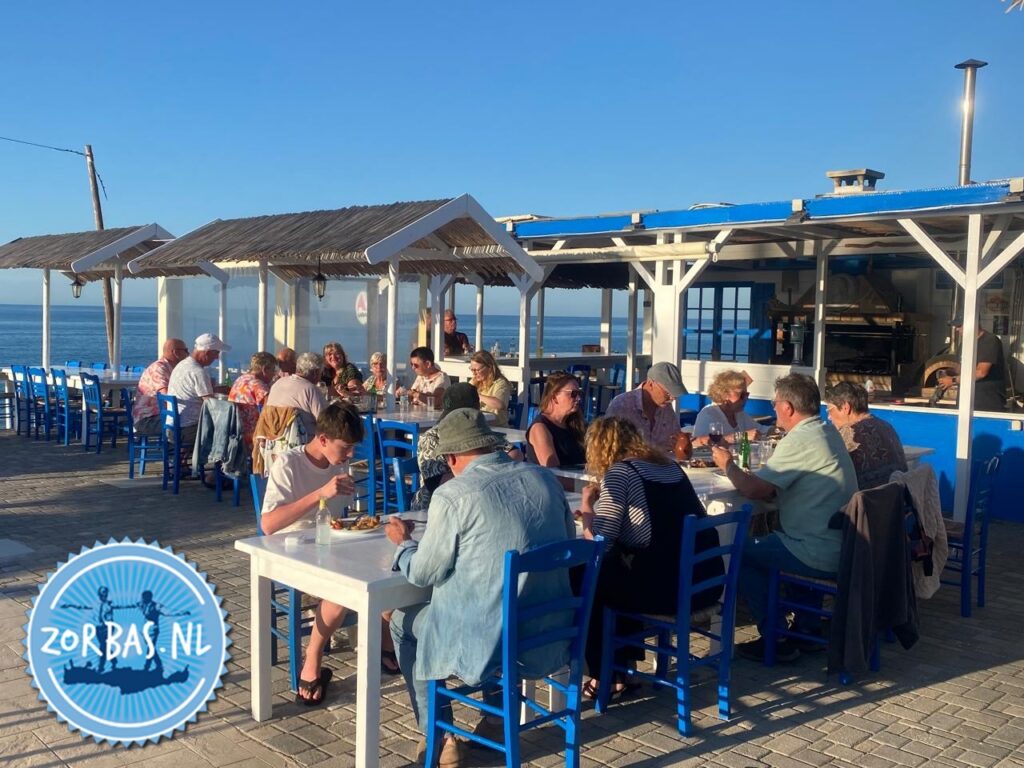
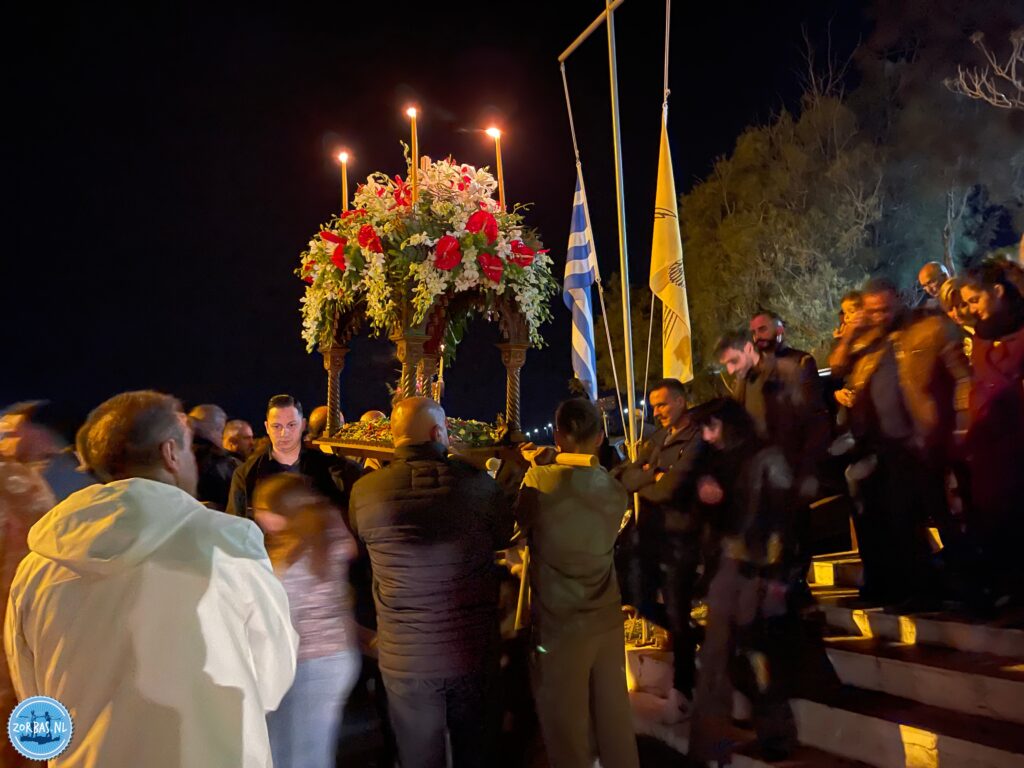
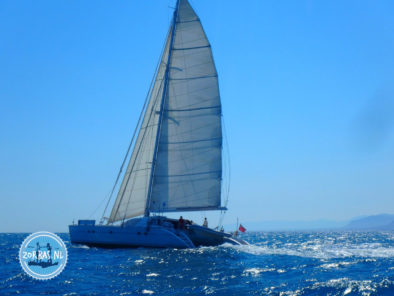
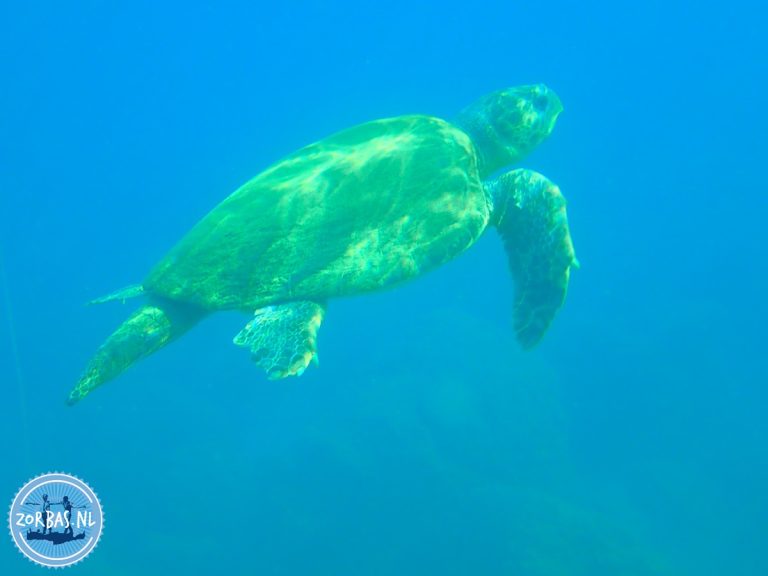
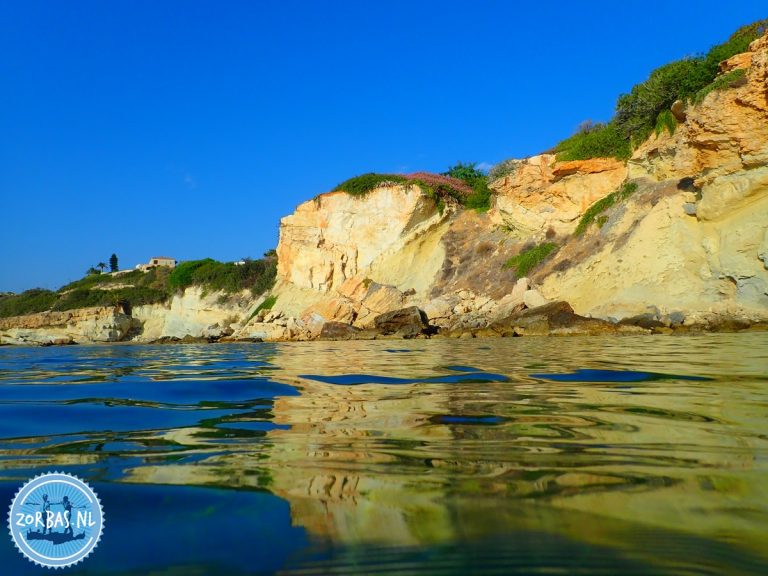

We are open again for the 2026 summer season from 1 April to 15 November 2026. We always respond within 24 hours.
More information
Zorbas Island 2026 Crete Greece Newsletter: your holiday in Crete in 2026 – The new Zorbas Island programme: dear holidaymaker, we are delighted to present the first details of our brand new programme for 2026! At Zorbas Island, everything revolves around an unforgettable holiday on beautiful Crete.
Holiday Crete 2026 agenda – Agenda Zorbas Island, Crete – Season: our new agenda is ready with the excursions for 2026, including many new excursions. You are probably curious about the activities we will be organising at Zorbas in the coming year, and this agenda provides an overview of all the activities that will interest you.
Holiday information Crete Zorbas Island: Apartment rentals and accommodation on Crete for most of the year. The right place for family apartments and holiday homes, all your excursions and cheap flights to Crete. A comprehensive overview of the latest holiday news from Crete, including lots of photos. Crete is the southernmost holiday island in Europe.
To give you an impression about your holiday at Zorbas Island on Crete, we created a short “Zorbas Island” Movie for you: If you got 5 minutes for holidays to Crete.
In case you like more information, please send an email to zorbasisland@gmail.com
Multi-day hike on the E4 in southwest Crete
📱 WhatsApp: +30 697 6788022 📧 E-Mail: Zorbasisland@gmail.com
